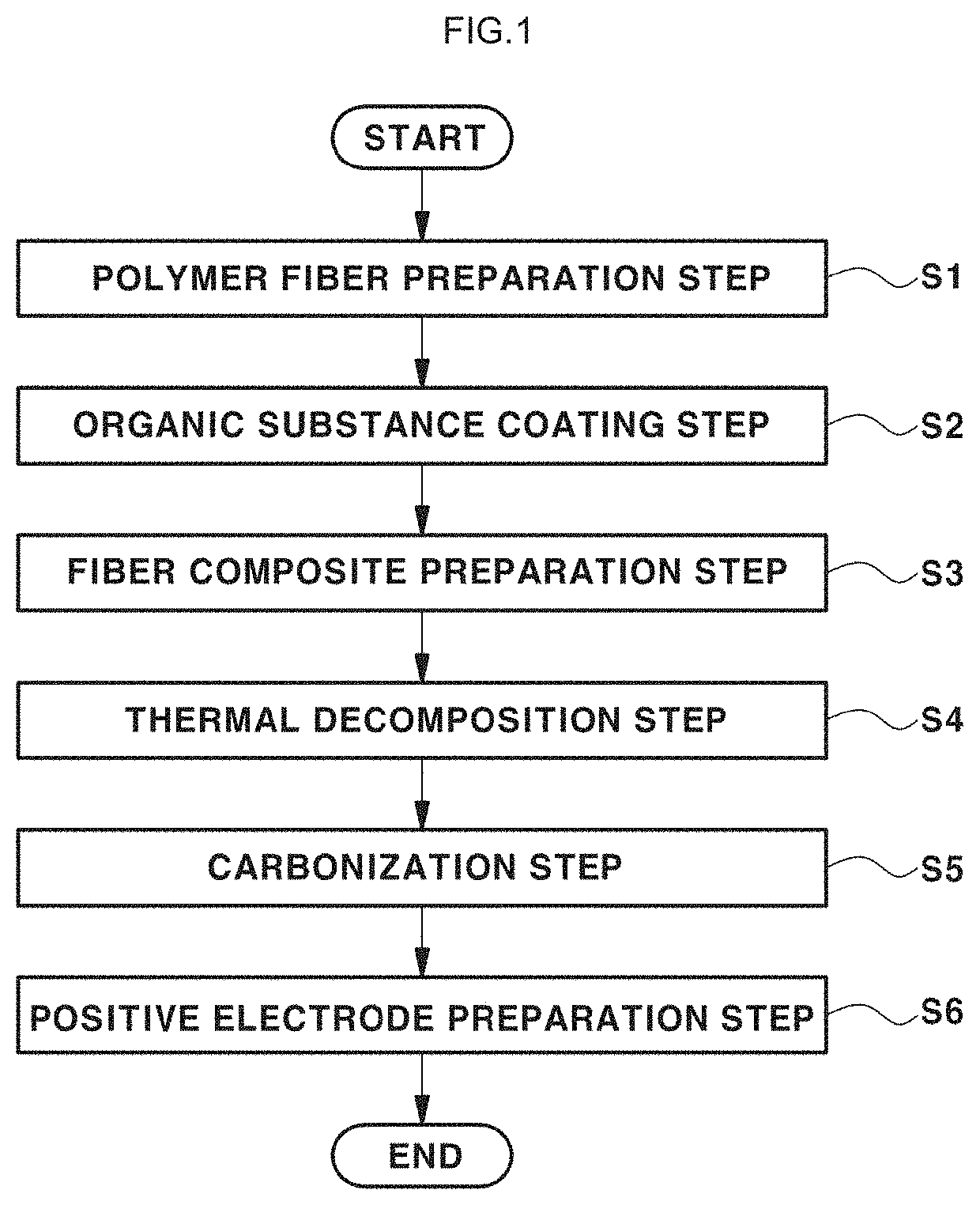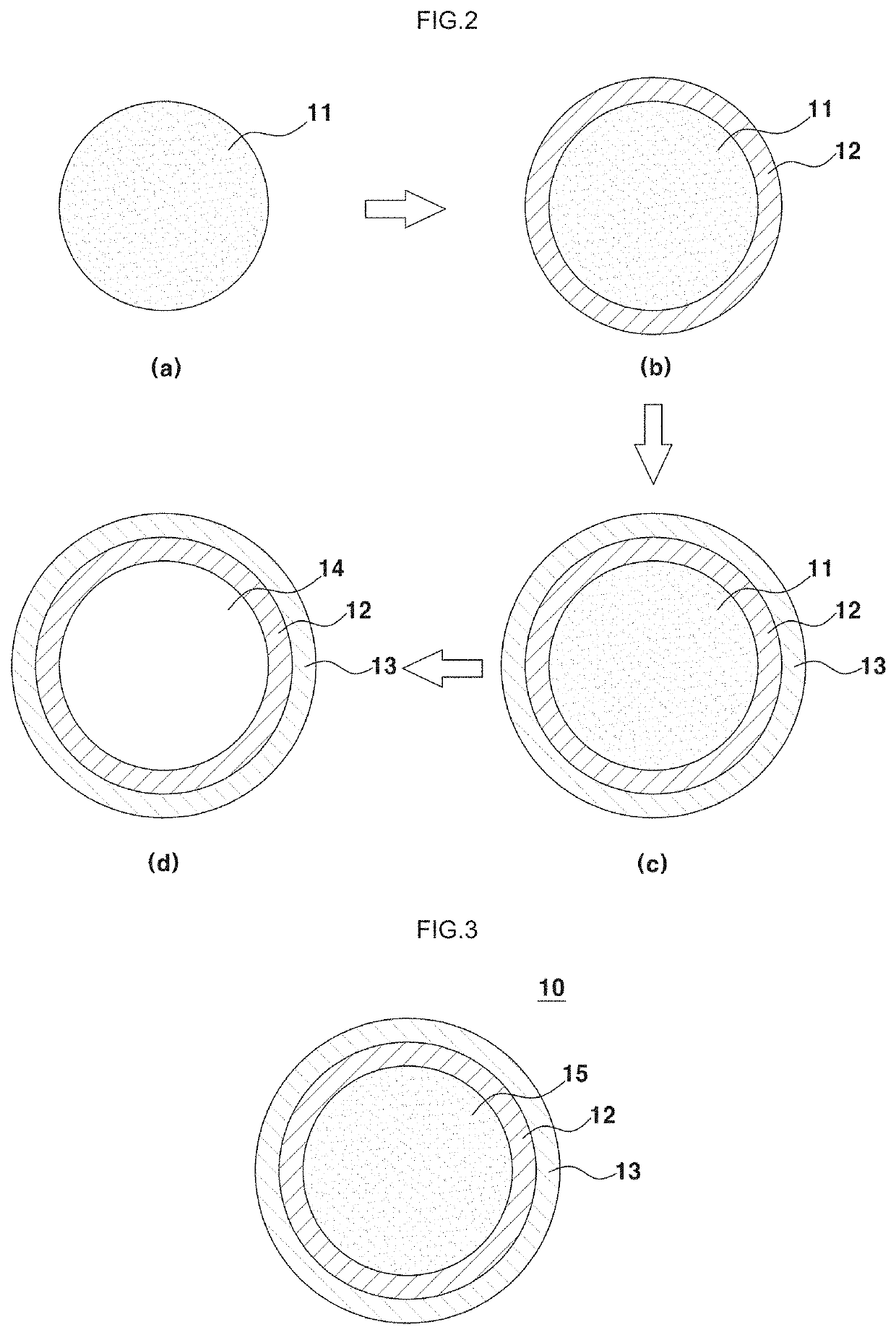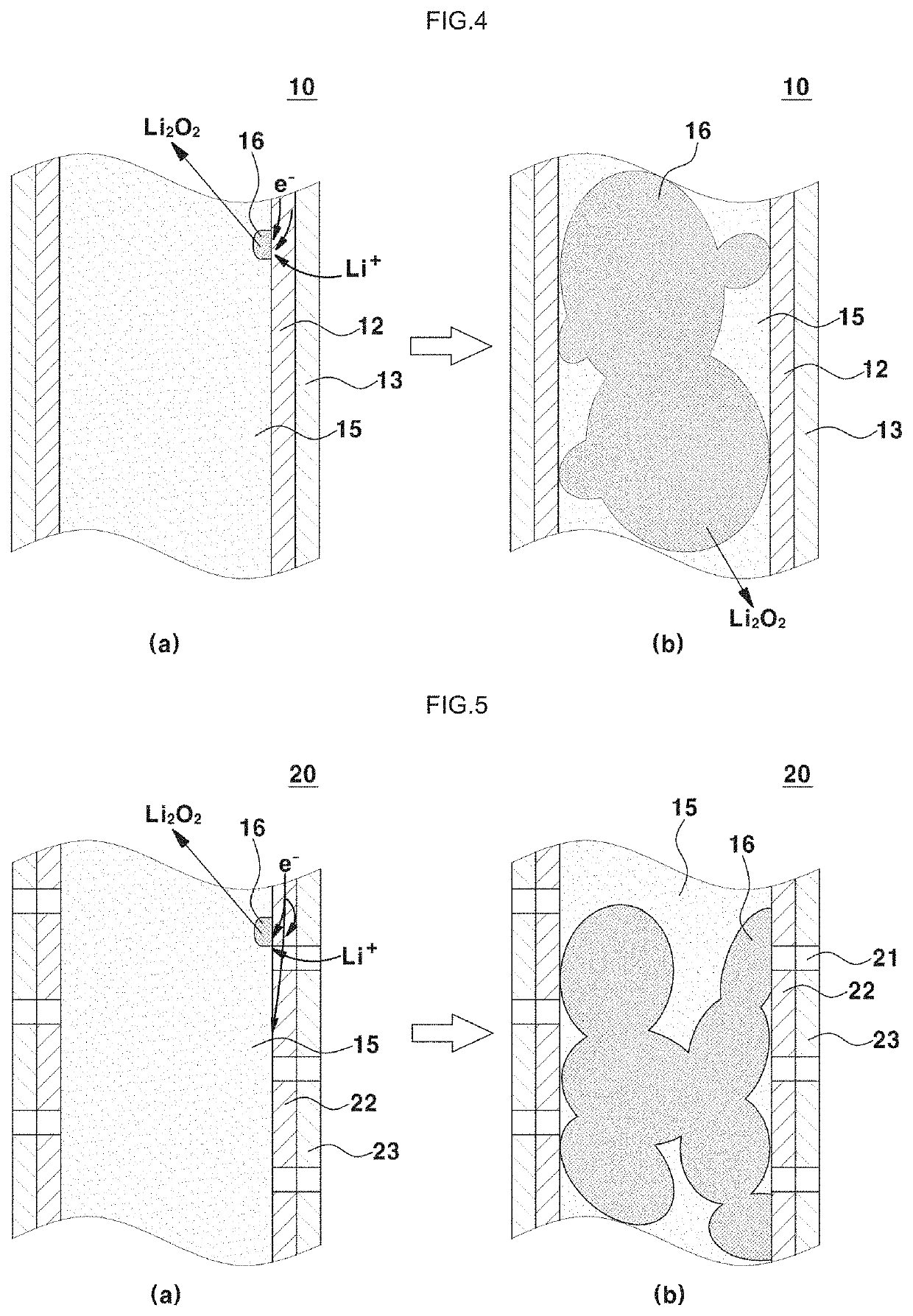Positive electrode for lithium-air battery, method of preparing the same, and lithium-air battery including the same
- Summary
- Abstract
- Description
- Claims
- Application Information
AI Technical Summary
Benefits of technology
Problems solved by technology
Method used
Image
Examples
example 1
[0091]A polymer solution was prepared in a manner such that polystyrene was mixed in an amount of 25% by weight with dimethylformamide. Subsequently, the polymer solution was electrospun in ethanol for 2 hours with a flow rate of 0.6 mL / hr, a voltage of 18 kV, and a distance of 15 cm from a nozzle to a collector. The diameter of the polystyrene fiber prepared in this manner was 2.7 μm.
[0092]An organic substance coating solution was prepared in a manner such that starch was mixed in an amount of 5% by weight with water. The viscosity of the aqueous starch solution was 200 mPa·s at a temperature of 25° C. The polystyrene fibers were dispersed in the organic substance coating solution and were shaken for 2 hours. The surface of the polystyrene fiber was coated with an organic substance by repeating the above process five times.
[0093]An oxide-based solid electrolyte coating solution was prepared by adding lithium metal to ethanol and dissolving the same. As a result, lithium ethoxide wa...
examples 2 and 3
[0096]A lithium-air battery was manufactured in the same manner as in Example 1. However, as shown in Table 1 below, the inner diameter of the carbon structure in the carbon fiber composite 10 of the positive electrode was different from that in Example 1.
experimental example 1
uation of Generation of Discharge Product in Positive Electrode During Discharging and Charging
[0100]In order to determine whether a discharge product was generated in the positive electrode of the lithium-air batteries manufactured in Examples 1 and 2, discharging and charging were performed by applying current to the lithium-air batteries with a pressure of 2 bar and a current density of 0.25 to 3 mA / cm2 under an oxygen atmosphere having a purity of 99.999%. The polymer fibers and the carbon fiber composites prepared in Examples 1 and 2 were measured using a scanning electron microscope (SEM). The measurement results are shown in FIGS. 6 to 11.
[0101]FIGS. 6 and 7 are SEM pictures showing the polymer fiber prepared through electrospinning in Example 1 and the diameter thereof. FIGS. 6 and 7 show that the polymer fiber prepared through electrospinning had a diameter of several micrometers. Accordingly, it is confirmed that the inner diameter of the carbon structure was 2.7 μm.
[0102]...
PUM
| Property | Measurement | Unit |
|---|---|---|
| Temperature | aaaaa | aaaaa |
| Temperature | aaaaa | aaaaa |
| Temperature | aaaaa | aaaaa |
Abstract
Description
Claims
Application Information
 Login to View More
Login to View More - R&D
- Intellectual Property
- Life Sciences
- Materials
- Tech Scout
- Unparalleled Data Quality
- Higher Quality Content
- 60% Fewer Hallucinations
Browse by: Latest US Patents, China's latest patents, Technical Efficacy Thesaurus, Application Domain, Technology Topic, Popular Technical Reports.
© 2025 PatSnap. All rights reserved.Legal|Privacy policy|Modern Slavery Act Transparency Statement|Sitemap|About US| Contact US: help@patsnap.com



